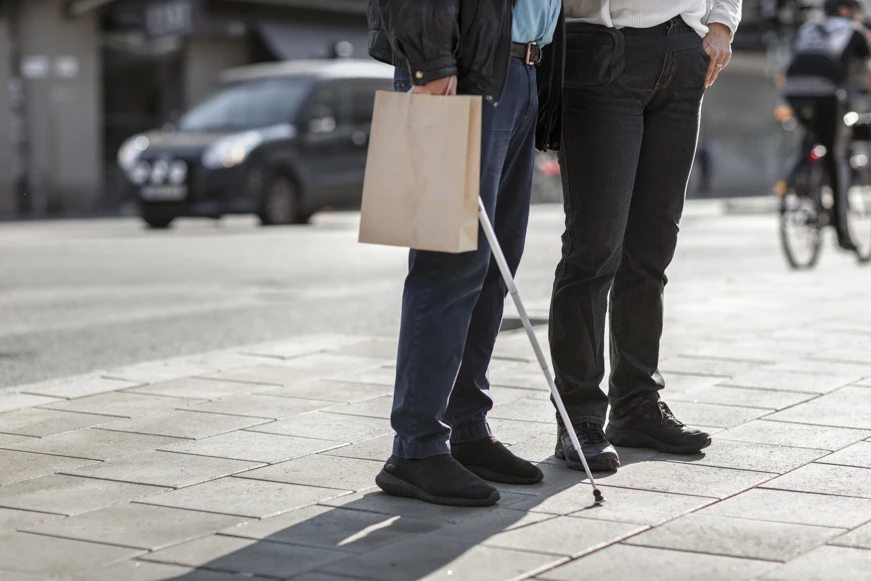
In May, we conducted a series of interviews with users in Stockholm to gather insights on their experiences with internet accessibility tools. These interviews were part of our ongoing efforts to better understand the needs of visually impaired users and to identify common pain points and potential solutions. Here are some key findings from the interviews.
Key Pain Points Identified
Frequent used Tools and Applications in Sweden:
- Voice-over and Siri: Widely used and trusted for daily tasks.
- BankID and Kivra: Essential for secure banking and identification.
- Healthcare and Pharmacies: Online services like 1177 and various pharmacy apps are effectively used.
- Apple Devices: Preferred for their robust accessibility features, including face and fingerprint recognition.
2. App Preferences Over Websites:
- Mobile Shopping: Users successfully shop for groceries and other essentials through familiar apps.
- Taxi Services: Calling and booking taxis via apps works well.
Pain Points and Challenges
1. Technical Issues and Accessibility:
- Delayed Payment Information: Payment terminals often delay in showing how much has been paid, causing confusion.
- WCAG Non-compliance: Websites not adhering to WCAG standards are inaccessible, leading to lost revenue for e-commerce platforms. A notable example is Kjell & Company, where frequent JavaScript errors disrupt navigation. As a user i am leaving the website and find other e-commerce and become a loyal customer.
- Difficulty Finding Login Buttons: Websites like ICA often have poorly placed or unlabelled login buttons.
- Poor PDF and Document Navigation: PDFs and Word documents without proper headings (H1, H2, H3) are challenging to navigate with screen readers.
- Ineffective Collapsible Menus: Dropdown menus on sites like 1177 do not function well with screen readers.
2. Limited Access to Information:
- Restricted Shopping Choices: Users often stick to previously bought items, missing out on new products and promotions. Current e-commerce are to complex – for example a foodstore often got 10-15.000 products – i cant read all of them with my tools.
- Inaccessible Images: Images on e-commerce sites generally do not work well, limiting the shopping experience.
- Lack of WCAG Adaptation: Many websites are not WCAG-compliant, making them difficult or impossible to use.
- Difficulty with Manuals and Instructions: Using manuals and instructions in PDF format is often problematic.
Additional Insights and Recommendations
Common Themes and the Users Recommendations
- Consistent Design and Layout: To improve navigation, there should be a push towards more standardized and consistent design practices across websites. Clear and predictable layouts can significantly enhance user experience. Given that 80% of visually impaired individuals have some sight, providing both visual and auditory outputs in apps is essential.
- Enhanced Screen Reader Support: Developers should prioritize making their websites fully compatible with screen readers. This includes properly labeling all interactive elements and ensuring that dynamic content is accessible.
- Accessible Forms: Designing forms with accessibility in mind is crucial. This includes:
- Providing clear instructions and labels for all fields.
- Ensuring that forms can be easily navigated using keyboard shortcuts.
- Mobile Accessibility: There is a need for better accessibility features in mobile apps and websites. Ensuring that touch interfaces are as intuitive as possible and providing alternatives to touch navigation can help.
Specific User Stories
- A female user reported difficulties with online banking, particularly with accessing account information and performing transactions due to poorly labeled buttons and complex forms.
- A male user highlighted the challenges faced with educational websites, where course materials and assignments were often not accessible via screen readers.
- A female user mentioned issues with shopping online, where navigating product categories and adding items to the cart was cumbersome due to inconsistent layout and hidden navigation options.
Conclusion of our two days interviews
The interviews conducted in Stockholm provided valuable insights into the daily challenges faced by visually impaired users when accessing the internet. Addressing these pain points through improved design practices, better screen reader support, accessible forms, and enhanced mobile accessibility can significantly enhance the online experience for these users. As we continue to refine our tools, these insights will be crucial in guiding our development efforts.
// the AIGETIT team in May 2024
